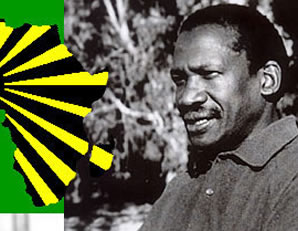Day 14: District 6 Museum & Robben Island
Day 14: District 6 Museum & Robben Island

 Today we
were able to go to the District 6 Museum.
When we got to the museum, I thought that it was going to be a
breeze. When we went inside, we were met
by our guide. As we listened to his
presentation, we came to understand that he was a former resident of “District
6”. As our guide walked us through the
museum, the
Today we
were able to go to the District 6 Museum.
When we got to the museum, I thought that it was going to be a
breeze. When we went inside, we were met
by our guide. As we listened to his
presentation, we came to understand that he was a former resident of “District
6”. As our guide walked us through the
museum, the
injustice that was done to the coloured residence of the district
was very apparent. As we walked through the
exhibit we were able to view old street signs, reconstructed bedrooms and local
establishments as well as large depictions of the destruction to the
homes. The things that stuck out to me were
the large banners and messages left by visitors over time. The destruction of “District 6” is, again,
quite a similar experience to other people of color around the globe.
After
about an hour of looking around the museum, we piled back onto the bus and
headed over to the V&A Waterfront and to the ferry for Robben Island.
We were able to learn much more about the story of different anti-apartheid political prisoners. As we
were bussed around the island, we were able to view the different places around the island. One of these places was of very high interest was the Robert Sobukwe house. Although unknown to most in the west, he was actually one of the most respected and feared of the African
nationalists. Sobukwe insisted that South Africa be returned to its indigenous
inhabitants ("Africa for the Africans").
"Sobukwe joined the ANC Youth League while a student in 1948
and became a leading player, with Nelson Mandela, in their 1952 Defiance
Campaign but gradually his views parted company with those of the ANC
leadership. He believed strongly in that the future of Africa should rest
solely in the hands of black Africans, denying the role of multi-racial groups
in favor of government for the individual. In 1959, he formed a new party, the
Pan Africanist Congress (PAC) and became its first President.
At his inauguration speech, he said:
“… multi-racialism is in fact a pandering to European bigotry and
arrogance. It is a method of safeguarding white interests, implying as it does,
proportional representation irrespective of population figures…W
e
guarantee no minority rights, because we think in terms of individuals, not
groups.”
An eloquent speaker, his message of black empowerment was instrumental
in creating the 1960s Black Consciousness Movement that questioned the very
white stance taken by the teachings of church, state and school and led
eventually to the Soweto Uprisings of 1976." (Source Source#2) This man was indeed so powerful and such a threat to the Apartheid government, that they met and passed the General Law
Amendment Act No 37 of 1963 aka T
he Sobukwe Clause,
which
allowed people already convicted of political offenses to be further detained. In laymen's terms, its was formulated, aimed and used to
keep PAC leader, Robert Sobukwe in Robben Island prison.
 In addition to learning about Sobukwe, we also learned of the true conditions of how the prisoners were treated, the work that they were forced to do, and the torture that they had to endure.
In addition to learning about Sobukwe, we also learned of the true conditions of how the prisoners were treated, the work that they were forced to do, and the torture that they had to endure. |
| Our guide who was an ex-political prisoner at Robben Island |
 |
| Nelson Mandela's Prison Cell at Robben Island |








0 comments:
Post a Comment